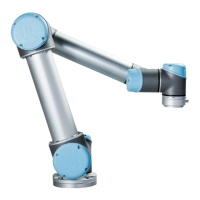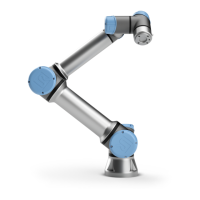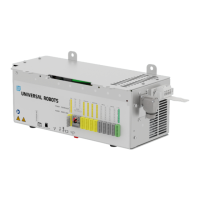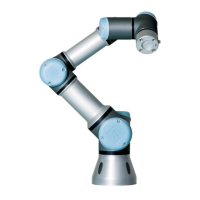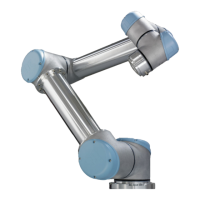13 Robot Control
13.1 Move Tab
On this screen you can always move (jog) the robot arm directly, either by translating/rotating
the robot tool, or by moving robot joints individually.
13.1.1 Robot
The current position of the robot arm is shown in 3D graphics. Push the magnifying glass icons
to zoom in/out or drag a finger across to change the view. To get the best feel for controlling
the robot arm, select the View feature and rotate the viewing angle of the 3D drawing to match
your view of the real robot arm.
If the current position of the robot TCP comes close to a safety or trigger plane, or the orientation
of robot tool is near the tool orientation boundary limit (see 10.12), a 3D representation of
the proximate boundary limit is shown. Note that when the robot is running a program, the
visualization of boundary limits will be disabled.
Safety planes are visualized in yellow and black with a small arrow representing the plane nor-
mal, which indicates the side of the plane on which the robot TCP is allowed to be positioned.
Trigger planes are displayed in blue and green and a small arrow pointing to the side of the
plane, where the Normal mode limits (see 10.6) are active. The tool orientation boundary
limit is visualized with a spherical cone together with a vector indicating the current orienta-
tion of the robot tool. The inside of the cone represents the allowed area for the tool orientation
(vector).
Version 3.11
Copyright © 2009–2019 by Universal Robots A/S. All rights reserved.
II-35 e-Series
